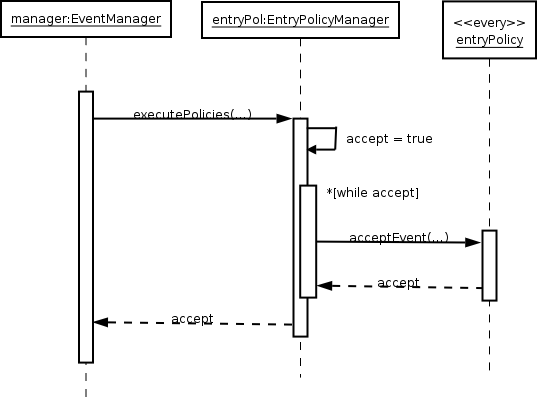Class InteractionsThe whole procedure for signaling an event and storing it is shown by Figure 6. 
Figure 6. Event signaling and storage. The process is started by an application which comunicates with the EventManager to signal an event. First of all, the EventManager checks with the EntryPolicyManager whether this event should be accepted. This sequence of steps avoids the overhead of event object creation when the event is not to be accepted. In this particular example, the event should be accepted, thus the call EntryPolicyManager.executePolicies returns true. The EventManager then calls the event factory designated by the calling application in order to create an event object. After that, the newly created event object is handed to the DataManagement system for storage. Figure 7 shows a detailed view of the execution of policies. 
Figure 7. Entry police execution. When the excutePolicies method is called, the EntryPolicyManager will iterate through the list of individual entry policies, calling the acceptEvent method on each of them. When some policy rejects the event, the EntryPolicyManager will break the loop and return false to the EventManager. If none of the policies rejects the event, then it shall be accepted and the executePolicies method will return true. |